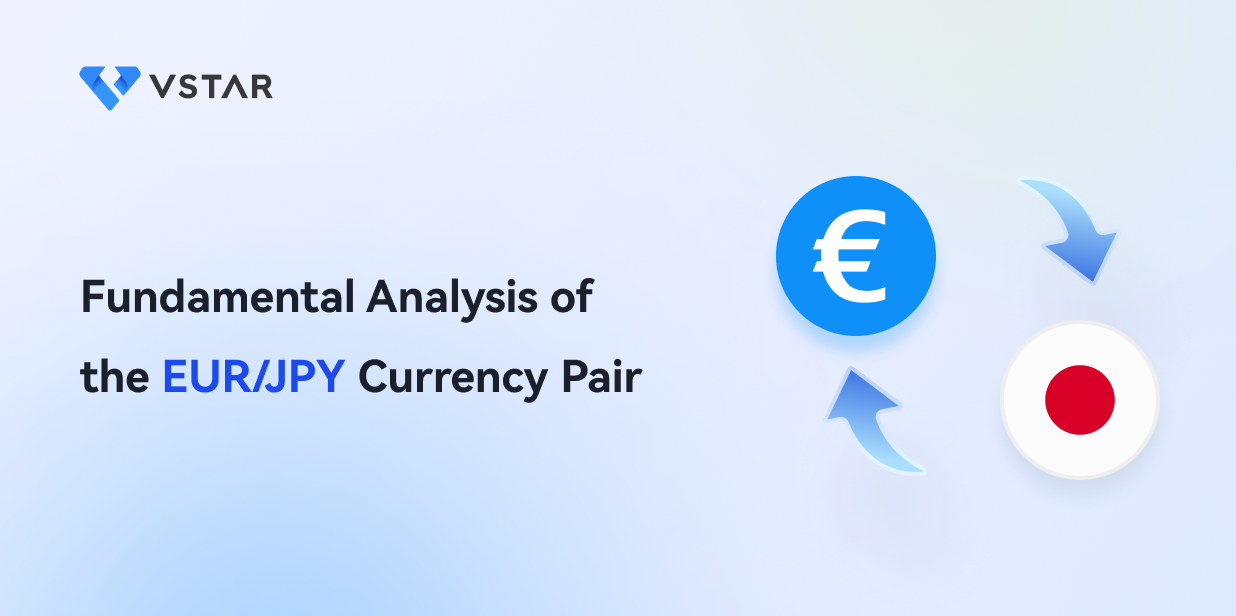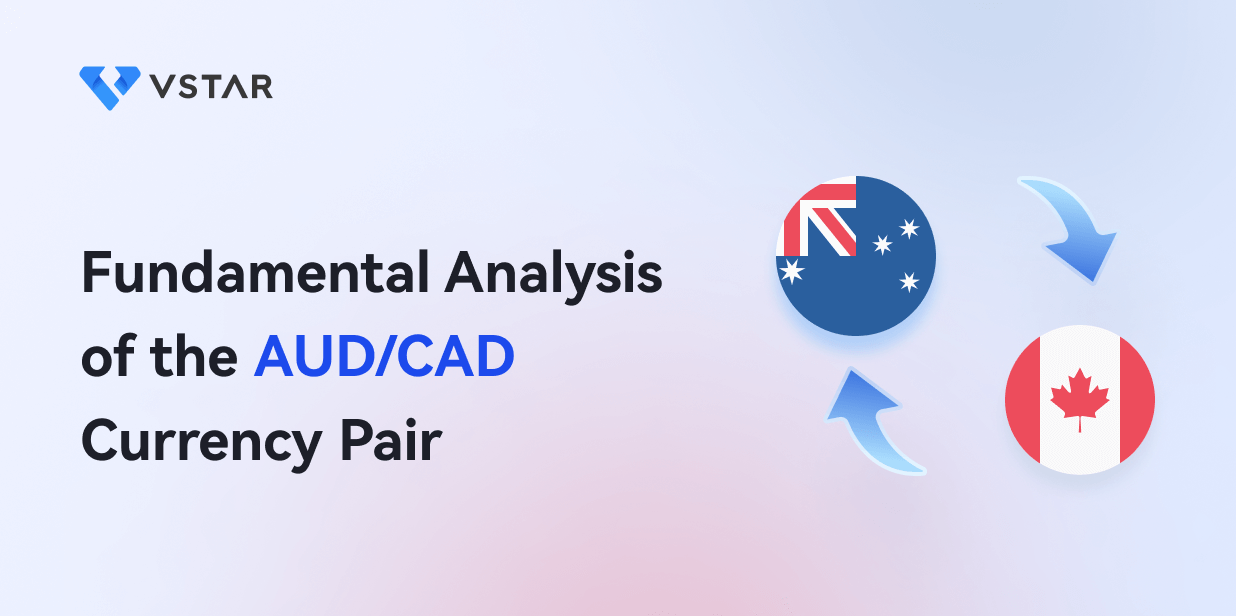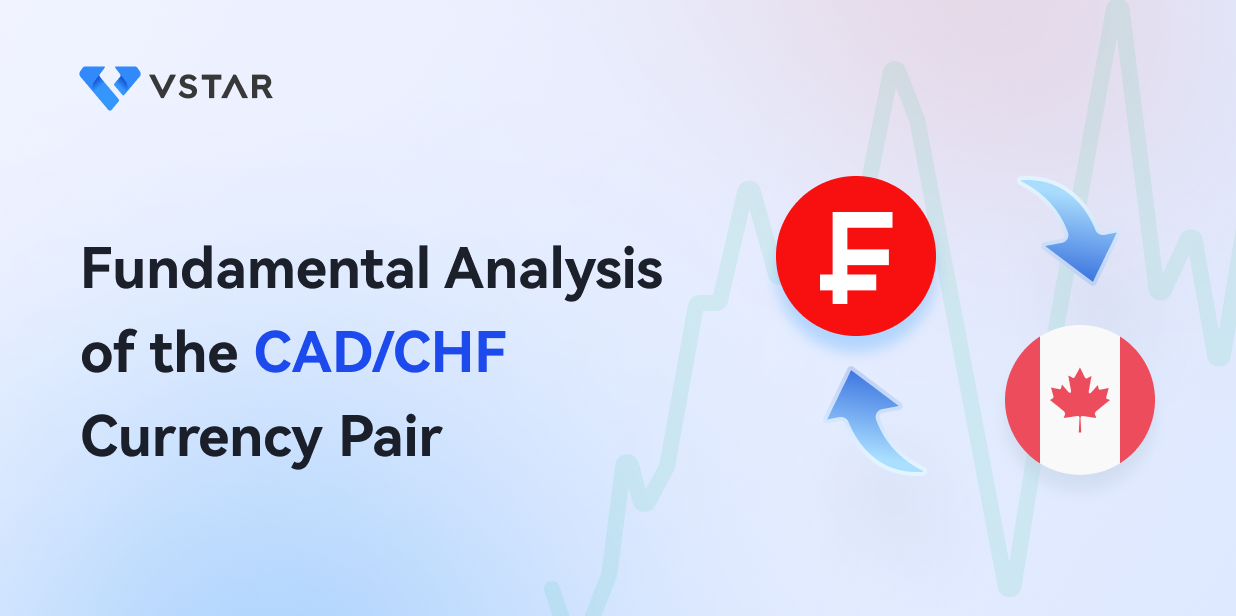The EUR/JPY currency pair is a widely traded pair in the forex market, representing the exchange rate between the euro (EUR) and the Japanese yen (JPY). Understanding the fundamental factors that influence this currency pair is crucial for traders and investors looking to make informed decisions.
Fundamental analysis plays a vital role in evaluating the EUR/JPY currency pair as it provides valuable insights into the EUR/JPY currency pair, allowing traders to make informed decisions based on economic indicators, monetary policies, and geopolitical events. Staying updated with the latest information and trends is essential to navigating the dynamics of the EUR/JPY currency pair effectively.
In 2020, the EUR/JPY currency pair faced significant volatility due to the economic impact of the pandemic. However, as the global economy started to recover in 2021 and 2022, the currency pair showed more stability and a gradual upward trend.
Macroeconomic Overview - Eurozone
The EUR/JPY currency pair is one of the most actively traded pairs in the foreign exchange market. To make informed trading decisions, conducting a thorough fundamental analysis that considers various macroeconomic factors affecting both the Eurozone and Japan is essential.

Image Source: Unsplash
A. Economic Indicators Review
GDP growth and unemployment rate are vital indicators of economic performance. In 2020, the Eurozone experienced a severe contraction due to the COVID-19 pandemic. However, in 2022 and 2023, the economy showed signs of recovery, with GDP growth rates picking up and unemployment rates gradually declining.
Inflation rates play a crucial role in monetary policy decisions. In 2020, the Eurozone faced low inflationary pressures, primarily due to weak demand. However, in subsequent years, inflation started to rise gradually, albeit at a moderate pace, reflecting a recovering economy.
Business and consumer confidence indicators provide insights into the overall sentiment and expectations within the economy. In 2020, confidence levels plummeted due to the uncertainty caused by the pandemic. However, as vaccination campaigns progressed and restrictions eased, confidence levels improved in 2022 and 2023, indicating growing optimism.
B. Monetary Policy

Image Source: iStock
The European Central Bank (ECB) plays a crucial role in setting monetary policy for the Eurozone. In response to the pandemic, the ECB implemented expansionary measures, including asset purchases and low-interest rates, to support the economy. As conditions improved, the ECB gradually adjusted its policy stance, aiming for a more balanced approach.
Interest rates have a significant impact on currency values. Throughout 2020, interest rates remained at historically low levels, and it was not until 2023 that the ECB signaled a gradual tightening of monetary policy. Higher interest rates could potentially strengthen the euro against the yen.
C. Political Climate

Image Source: wallpaperflare
Government economic policies, such as fiscal stimulus measures and structural reforms, influence economic growth and stability. In response to the pandemic, governments in the Eurozone implemented substantial fiscal support packages to mitigate the impact of the crisis. These measures contributed to the recovery seen in subsequent years.
Brexit, the withdrawal of the United Kingdom from the European Union, had implications for the Eurozone. While the immediate impact was felt more significantly in the UK, the Eurozone also faced some challenges in trade and financial markets. However, the Eurozone adapted and implemented measures to mitigate disruptions, gradually stabilizing the situation.
Macroeconomic Overview - Japan

Image Source: unsplash
When conducting a fundamental analysis of the EUR/JPY currency pair, it is essential to consider the macroeconomic overview of both the Eurozone and Japan so that you can gain insights into the factors influencing the EUR/JPY exchange rate. Staying informed about the latest developments and utilizing appropriate analysis techniques can assist you in making well-informed trading decisions.
A. Economic Indicators Review
Japan experienced economic challenges in recent years. In 2020, the country faced a contraction due to the COVID-19 pandemic. However, by 2022 and 2023, Japan's GDP showed signs of recovery, although growth rates remained moderate. The unemployment rate, initially affected by the pandemic, gradually improved over time.
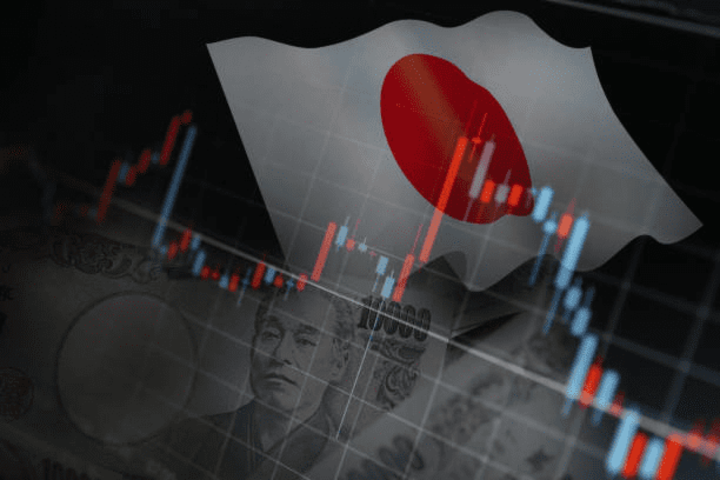
Image Source: istockphoto
Japan has struggled with low inflation rates in recent years. Despite efforts by the Bank of Japan to stimulate inflation, the country experienced a period of deflationary pressures. Inflation remained subdued throughout 2020, 2022, and 2023, contributing to the Bank of Japan's accommodative monetary policy stance.
Business and consumer confidence are important indicators of economic sentiment. In 2020, both business and consumer confidence declined due to the uncertainty caused by the pandemic. However, as conditions improved, confidence levels showed some recovery in 2022 and 2023, reflecting cautious optimism within the Japanese economy.
B. Monetary Policy
The Bank of Japan (BOJ) plays a vital role in determining monetary y for the country. In response to the economic challenges posed by the pandemic, the BOJ implemented expansionary measures, including asset purchases and maintaining low-interest rates. The BOJ continued its accommodative stance in 2022 and 2023 to support economic recovery.
Interest rates have a significant impact on currency values. In Japan, interest rates remained low throughout 2020, 2022, and 2023 as part of the BOJ's efforts to stimulate economic growth. Expectations for interest rate increases in the near term remained subdued, which influenced the EUR/JPY currency pair.
C. Political Climate
The Japanese government implemented various economic policies to support growth and recovery. In response to the pandemic, fiscal stimulus measures were introduced to stimulate demand and provide support to businesses and households. These policies aimed to mitigate the negative impact on the economy and promote sustainable recovery.
Global trade disputes, such as those involving major economies like the United States and China, can have significant implications for Japan as an export-oriented economy. Trade tensions can disrupt supply chains and affect export demand, impacting Japan's economic performance. Managing and navigating these trade disputes became a crucial focus for the Japanese government.
Analysis of the EUR/JPY Currency Pair
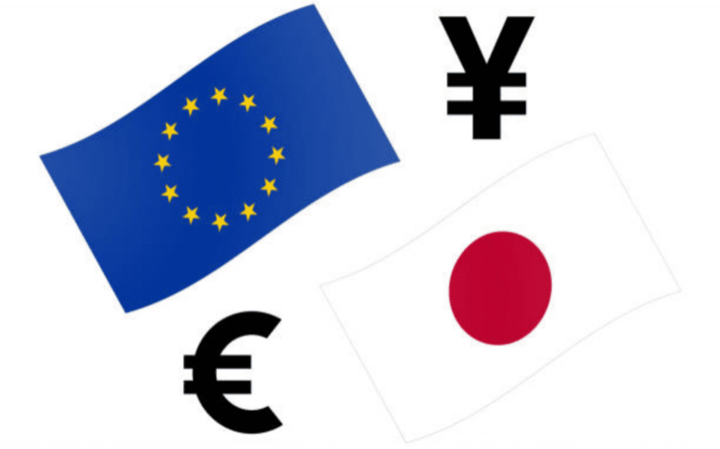
Image Source: istockphoto
If you are up to conducting a fundamental analysis of the EUR/JPY currency pair, it is essential to find relevant economic indicators, factors that support a bullish or bearish stance, and potential risks that could impact the pair's performance. The eurozone and Japanese economies have shown a correlation that influences the currency pair in recent years. Analyzing these elements can help you to gain insights into the dynamics of the currency pair and make informed decisions.
A. Relevant Economic Indicators

Image Source: istockphoto
Correlation between the eurozone and Japanese economies: The eurozone and Japanese economies are major players in the global market, and their economic performance can significantly impact the EUR/JPY currency pair. Changes in GDP growth, inflation rates, and interest rates in both regions can create fluctuations in the currency pair's value.
Higher GDP growth in either the eurozone or Japan can lead to an appreciation of their respective currencies, thereby affecting the EUR/JPY exchange rate. Inflation rates and interest rates also play a crucial role in currency valuation, as central banks use these tools to manage their economies and stabilize prices.
B. Factors Supporting a Bullish or Bearish Stance

Image Source: istockphoto
The monetary policy decisions of the European Central Bank (ECB) can have a significant influence on the EUR/JPY currency pair. Expansionary policies, such as lowering interest rates or implementing quantitative easing, may support a bullish stance by boosting economic growth and increasing demand for the euro.
The monetary policy decisions of the Bank of Japan (BoJ) can impact the EUR/JPY currency pair. Accommodative policies, such as low-interest rates or asset purchases, may support a bearish stance by stimulating economic activity in Japan and potentially weakening the yen.
Also, global trade disputes can create volatility in the currency markets and impact the EUR/JPY pair. As both the eurozone and Japan heavily rely on international trade, any disruptions or changes in trade policies can affect their respective economies and subsequently influence the currency pair.
C. Potential Risks to the Currency Pair

Image Source: istockphoto
Tariffs, trade restrictions, or unexpected policy shifts by major economies can lead to increased volatility in the EUR/JPY pair. Trade tensions between the eurozone and Japan's major trading partners, such as the United States or China, can significantly impact the currency pair's performance.
Besides, unforeseen shifts in monetary policies by the ECB or the BoJ can cause fluctuations in the EUR/JPY pair. Sudden interest rate adjustments or changes in quantitative easing programs can create uncertainty and affect the valuation of both currencies.
Natural disasters, political instability, or geopolitical conflicts in either the eurozone or Japan can impact the currency pair. These events can disrupt economic activities, investor sentiment, and financial markets, increasing volatility and risk aversion.
By considering these economic indicators, supporting factors, and potential risks, you can better understand the fundamental factors influencing the EUR/JPY currency pair. It is important to stay updated on the latest economic data, central bank announcements, and global developments to make informed decisions when trading or investing in this currency pair.
Trading Strategies for EUR/JPY
Employing effective strategies to trade the EUR/JPY currency pair can help you make informed decisions and improve your chances of success. Two commonly used strategies are technical analysis and news trading. Implementing proper risk management techniques is crucial for preserving capital and minimizing losses. Let's explore these strategies in more detail.
A. Technical Analysis
Technical analysis involves studying historical price data to identify trends and patterns that can provide insights into future price movements. By analyzing charts, traders can spot upward or downward trends and chart patterns such as triangles, head, and shoulders, or double tops/bottoms.
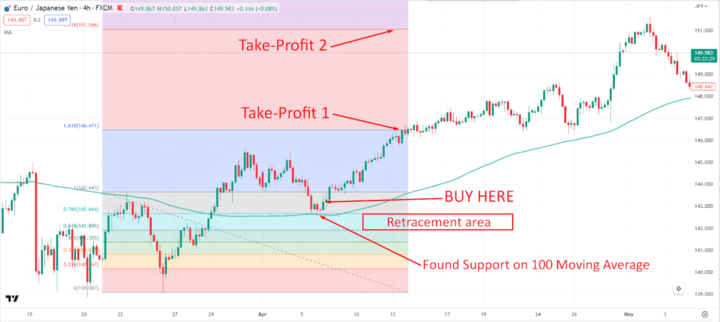
Image Source: Tradingview
Also, you may employ technical indicators to enhance your analysis. Popular indicators for the EUR/JPY pair include Fibonacci retracements, which help identify potential support and resistance levels, and moving averages, which smooth out price data to identify trends and possible entry/exit points.
B. Risk Management

Image Source: istockphoto
Risk management is crucial in trading to protect capital and minimize losses. So, setting up stop-loss orders to automatically exit a trade if the market moves against you beyond a predetermined level can be a game changer. Also, you can set take-profit orders to secure profits when the market reaches a favorable price level.
You should determine their position size based on your risk tolerance and account size. By calculating the appropriate position size, traders can control their risk exposure and avoid taking on excessive risk.
C. News Trading

Image Source: istockphoto
News trading involves monitoring economic events, such as central bank announcements, GDP releases, and employment reports, that can significantly impact the EUR/JPY pair. Keeping an eye on these factors will help to stay updated on economic calendars to identify potential trading opportunities arising from market reactions to the news.
When significant news is released, market volatility can increase, leading to potential trading opportunities. Then you can analyze the impact of news on the currency pair and make informed decisions based on the market's reaction. It is important to note that news trading requires quick decision-making and effective risk management.
Incorporating these trading strategies into your trading approach may enhance your decision-making process and increase your chances of success when trading the EUR/JPY currency pair. Additionally, you can leverage the benefits of VSTAR, an innovative trading platform that provides advanced tools and analysis to help traders make informed trading decisions. With VSTAR, you can access real-time market data, technical analysis indicators, and news alerts, empowering you to trade with confidence and efficiency.


Remember always to conduct thorough research, practice risk management, and stay updated on the latest market developments to improve your trading performance.
Conclusion
Based on the analysis, the EUR/JPY pair has shown a bullish stance in recent years. In 2020, the Euro experienced strength against the Japanese Yen due to favorable economic conditions in the Eurozone. In 2022, the pair continued to rise as the European economy recovered from the impact of the pandemic. In 2023, positive economic indicators and monetary policy decisions supported the bullish sentiment.
Remember, trading involves risks, and it is crucial to conduct thorough research and seek professional advice before making any investment decisions. Trading the EUR/JPY currency pair requires careful consideration of fundamental analysis and effective trading strategies. It is essential to monitor economic indicators, central bank policies, and geopolitical factors that can influence the exchange rate.
By implementing sound trading strategies, you can take advantage of the potential opportunities presented by the EUR/JPY pair. With the right knowledge and tools, you can navigate the dynamic world of the EUR/JPY currency pair and potentially achieve success in your trading endeavors.







